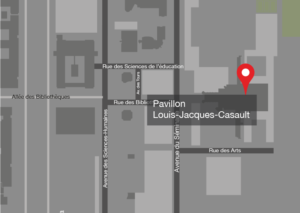New geospatial methods for exploring tradeoffs in marine conservation planning
Source : CRSNG (Conseil de Recherches en Sciences Naturelles et en Génie du Canada)Programme : Subvention à la découverte et supplément d'accélération à la découverte
Période : 2017-2020
Chercheur(s) du centre impliqué(s):
- Rodolphe Devillers
From transportation to resource management and health, geospatial data and technologies are now used to support decisions in most sectors of our society. The increasing volume, complexity and diversity of data creates however a need for new methods that can help identify, summarize and visualize information relevant to decision-makers, something that is the focus of many research projects in geomatics, computer sciences, geography and other disciplines. In the marine environment, geospatial technologies became a key tool supporting the planning of our ocean use (e.g. Marine Spatial Planning) and more specifically to help design and monitor marine protected areas. From simple uses of Geographic Information Systems (GIS) to map different variables, to more complex methods and systems that help analyzing data and supporting decisions, geospatial data and systems play an increasing role in marine conservation planning. While a range of approaches and tools already support conservation planning efforts, the complexity of those decisions is rarely captured and still calls for new methods. In Canada, planning of new marine protected areas (MPAs) is ongoing in our three oceans. Canada committed to increase its MPAs from less than 1% of its territorial waters to at least 10% in less than 5 years, a trend that is expected to continue after. Such process requires the integration of large and diverse biological and socio-economic datasets and the involvement of many stakeholders. Exploring trade-offs between the need for diverse human activities (e.g. fishing, oil and gas exploration, shipping, tourism) and the need to protect fragile and valuable ecosystems is at the core of those processes that are often aiming to reach consensus with the different stakeholders. Existing methods however tend to only offer very simple ways to capture those trade-offs, and more research is required to design and test new methods that can help providing methods and tools that would allow decision-makers and stakeholders to better explore alternative conservation scenarios, their respective strengths and weaknesses, uncertainties, etc. The proposed research aims at exploring how geospatial approaches used for supporting decisions in other fields can contribute to the field of marine conservation planning. Specific research objectives are to: 1. Design and test approaches based on methods from the field of decision-theory that can help capture and communicate in the form of simple indicators complex trade-offs between biodiversity conservation and the socio-economic use of the oceans. 2. Explore how methods from the field of geovisual analytics can be used to design visualizations allowing decision-makers and stakeholders to explore trade-offs and conservation options. 3. Develop methods for visualizing, exploring and comparing alternative conservation scenarios.



